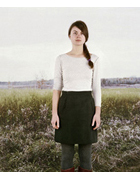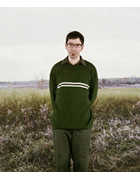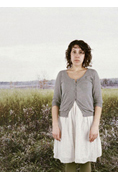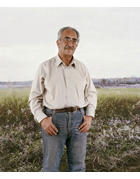L'un ou l'autre

The project brings together different uses of photography—commercial studio portraits, ID photos, and travel snapshots. To make the portraits, I first printed a large landscape photograph which I set up as a backdrop in the studio. I then invited eighty strangers to take their place in front of this background. This shared environment reveals nothing about the subjects, but it does stress their presence in this specific place, which shows the landscape as timeless and “permanent” in contrast to each individual’s temporary passage.
This project shows different times: an exterior view with the model’s back turned to the camera, an interior shot of the landscape that serves as the project’s ground, a present steeped in contemplation. The landscape has been digitally altered, but only slightly, playing up the ambiguity of both photographic shots. Who was where, and when were they there? Which of the images is a true or faithful rendering of reality? And, in respect to truth, is there one version in particular that stands out?
In this way, the project casts a solemn glance at a collectivity whose identity is levelled by the accumulation of characters against a common landscape.All of these “others” are the faces, the potential encounters, that one might envision marking the life of the protagonist at the centre of this project. Shown with their back to the viewer, the protagonist looks out, like a witness, across an empty landscape. This landscape is the same as the one that extends into the background of the surrounding portraits. The image alludes to Romantic-era paintings (especially Gaspar David Friedrich’s Wanderer above the Sea of Fog) with the intent of representing the reality of the world—the world of models—as an enigma. It uses the idealized landscape, with its local colours, to suggest a melancholy present, without any trace of a future, where the individual occupies the centre of the world and its image.
Ce projet montre différents temps : la prise de vue extérieure avec le modèle de dos, la prise de vue intérieure avec le paysage de base et le présent immersif de la contemplation. L’image de base – le paysage – est légèrement manipulée numériquement, ce qui joue sur l’ambiguïté des prises de vue… Qui était où et quand? Laquelle des images est vraie, fidèle à la réalité ? Y en a-t-il seulement une qui le soit?

























